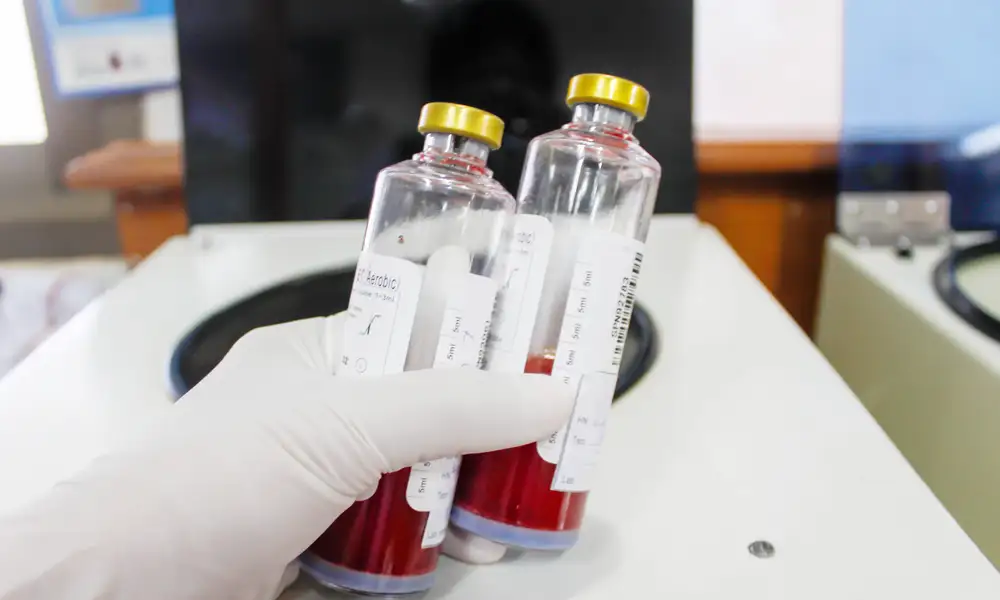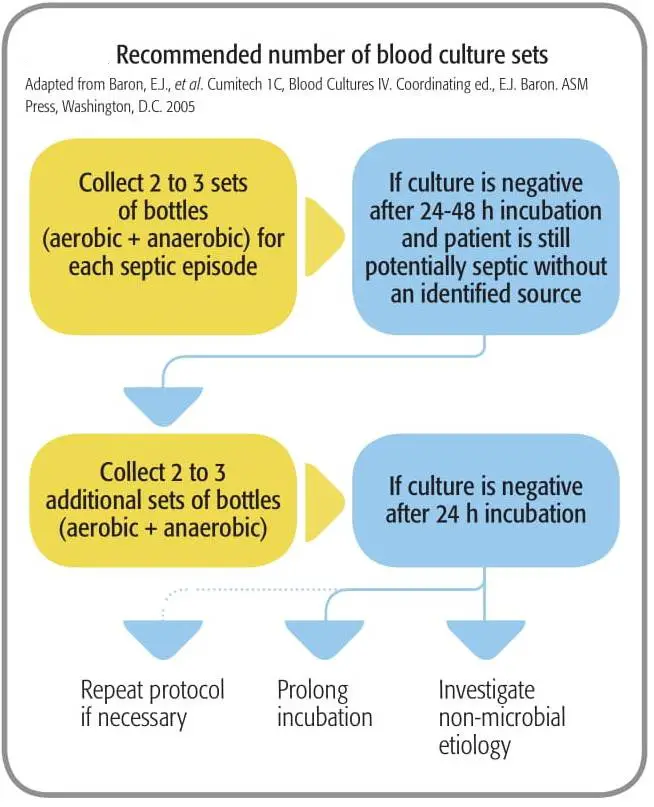Imagine a tiny, invisible world teeming with microscopic organisms, both friendly and potentially harmful. These microorganisms, collectively known as bacteria, viruses, fungi, and parasites, inhabit our world, and some may find their way into our bodies, causing infections. When doctors suspect a blood infection, they often order a blood culture, a test designed to identify the culprit lurking within our bloodstream. But how long do we have to wait for these results, and what do they mean for our health?

Image: www.suburbandiagnostics.com
A blood culture is a crucial diagnostic tool for physicians, providing a window into the hidden battles taking place within our bodies. It’s a powerful weapon in the fight against infections, but its effectiveness relies heavily on accurate and timely results. This article will delve into the world of blood cultures, exploring the intricacies of this test, the time frame for results, and the factors influencing their accuracy.
Understanding Blood Cultures
A blood culture is a laboratory test that involves drawing a sample of blood and cultivating it in a sterile environment to encourage the growth of any microorganisms present. Imagine a tiny petri dish, resembling a miniaturized world where bacteria can freely multiply and reveal their presence. The process, though simple in concept, involves careful procedures and meticulous attention to detail.
Here’s a step-by-step breakdown:
- Blood Draw: A healthcare professional carefully draws a sample of blood from a vein, typically from the arm.
- Culture Bottles: The blood is then transferred into specialized bottles containing a nutrient-rich broth and an anticoagulant to prevent clotting.
- Incubation: These bottles are placed in an incubator, a controlled environment designed to mimic the ideal temperature for bacterial growth.
- Monitoring: Over several days, technicians regularly monitor the bottles for any signs of growth, including cloudiness or discoloration, indicating the presence of bacteria.
- Identification: If growth is detected, the bacteria are isolated and identified using various methods, such as microscopic examination, biochemical tests, and, in some cases, advanced molecular techniques.
The results of a blood culture provide crucial information, helping physicians to:
- Confirm Diagnosis: Identify the presence of a bloodstream infection and the specific microorganism causing it.
- Guide Treatment: Determine the most effective antibiotics for treating the infection, taking into account the sensitivity of the identified organism.
- Monitor Progress: Track the effectiveness of treatment by repeating blood cultures and observing any changes in the growth of bacteria or their susceptibility to antibiotics.
Factors Influencing Result Time
The time required to obtain blood culture results varies significantly depending on a multitude of factors, including:
- Microorganism Type: The growth rate of bacteria can differ considerably. Some bacteria multiply rapidly, yielding results within a day or two, while others take longer to cultivate, sometimes requiring up to a week.
- Specimen Contamination: If the blood sample is contaminated during the collection or handling process, the culture may become contaminated with other microorganisms, hindering the identification of the true culprit responsible for the infection.
- Laboratory Practices: The efficiency and speed of the laboratory, including the availability of advanced equipment and skilled technicians, can influence the turnaround time.
- Blood Culture Technique: The specific type of blood culture bottle used, as well as the incubation conditions, can impact the growth rate of microorganisms and the time required to obtain results.
Understanding the Results
Once the blood culture results arrive, interpreting them requires a thorough understanding of the various possibilities. Here are some common scenarios:
- Positive Result: This indicates the presence of bacteria in the blood, signifying a bloodstream infection. The report will typically identify the specific type of bacteria, its sensitivity to various antibiotics, and other relevant information to guide treatment.
- Negative Result: This indicates that no bacterial growth was detected in the blood sample. However, it is important to remember that even a negative result doesn’t completely rule out a bloodstream infection, especially in early stages or certain types of infections.
- Contaminated Result: This indicates that the blood culture is contaminated with other microorganisms, hindering the accurate identification of the source of the infection. In such cases, repeating the blood culture with rigorous attention to sterile procedures may be necessary.

Image: www.vrogue.co
The Importance of Timely Results
Prompt and accurate blood culture results are essential for effective patient management. Delayed results can lead to several complications:
- Inappropriate Treatment: Misdiagnosis or a delay in identifying the correct organism could lead to the use of ineffective antibiotics, potentially increasing the risk of complications and extending the duration of the infection.
- Increased Patient Risk: A delay in identifying and treating a bloodstream infection can lead to severe consequences, including sepsis, organ damage, and even death. Especially for patients with weakened immune systems, prompt treatment is crucial.
- Prolonged Hospitalization: Delayed diagnosis and treatment can lead to extended hospital stays, which are costly and inconvenient for patients.
The Future of Blood Culture Testing
The field of blood culture testing is continually evolving with advancements in technology:
- Automated Blood Culture Systems: Modern automated systems can expedite result times and enhance accuracy by providing continuous monitoring and early detection of microbial growth.
- Rapid Diagnostic Tests: Emerging molecular diagnostics, such as polymerase chain reaction (PCR) tests, can detect bacteria and other microorganisms in blood samples faster than traditional culture methods, potentially reducing the turnaround time to hours instead of days.
- Artificial Intelligence (AI): AI algorithms are increasingly being used to analyze blood culture data, helping to provide quicker and more accurate diagnoses and predictions of antibiotic resistance.
Blood Culture How Long For Results
Conclusion
Blood culture is a vital diagnostic tool that provides critical information about bloodstream infections, guiding the selection of appropriate antibiotics and ensuring timely and effective treatment. While the time required for results varies depending on numerous factors, advancements in technology are shortening turnaround times and improving accuracy, ultimately contributing to better patient outcomes. Understanding the intricacies of this test, the factors influencing result time, and the importance of prompt diagnosis is crucial for patients and healthcare providers alike. As the field continues to advance, we can expect further improvements in blood culture technology, paving the way for faster, more accurate, and accessible diagnostics for a wide range of infections.






